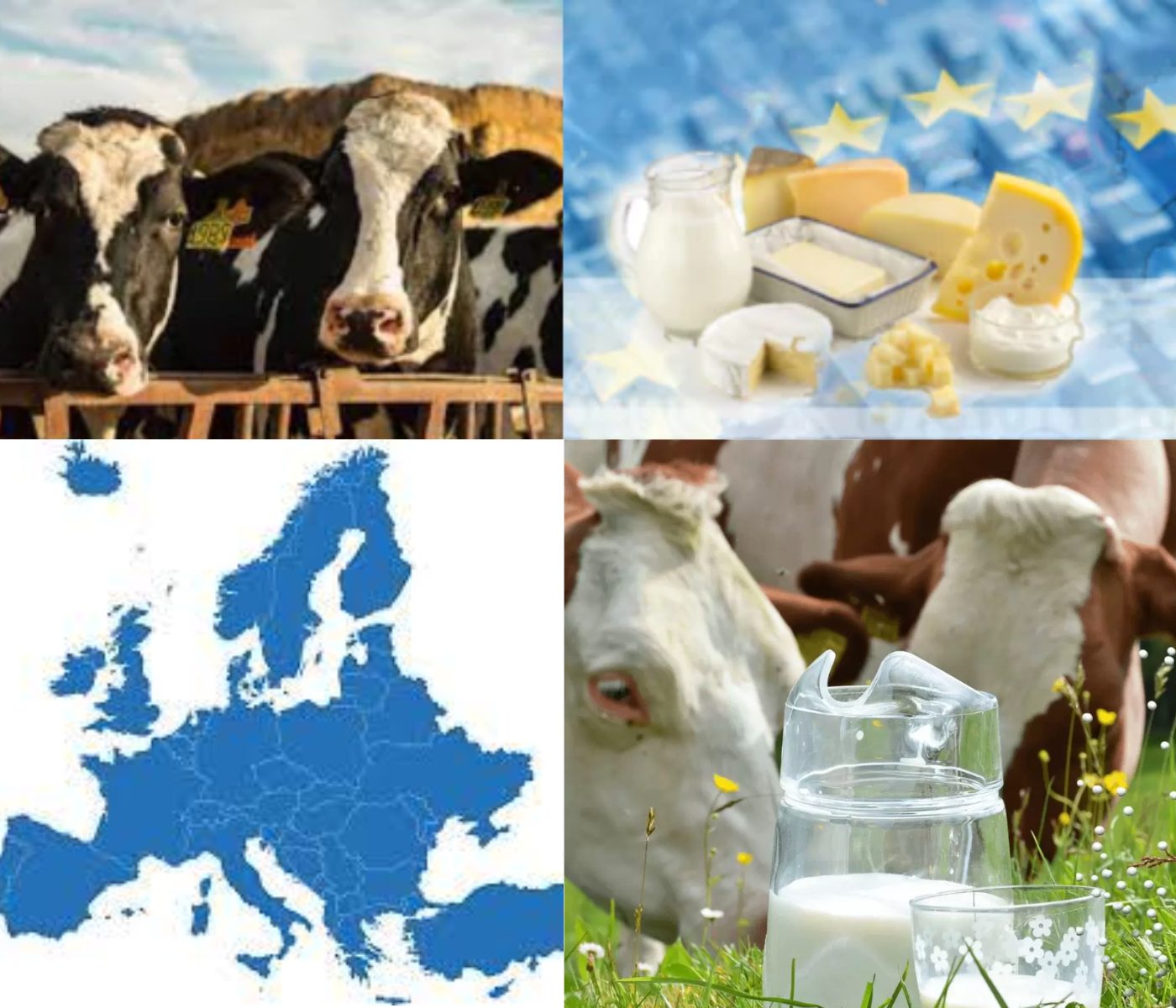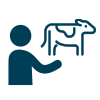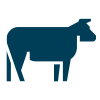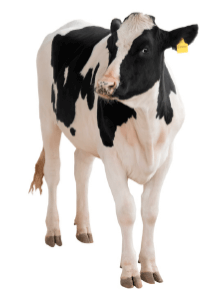The European model of dairy production: a guarantee of food sovereignty, animal welfare, and environmental care
 09 Nov 2023
09 Nov 2023
The European model of dairy production: a guarantee of food sovereignty, animal welfare, and environmental care
 The dairy sector is pursuing an ambitious roadmap to enhance environmental respect while prioritizing animal welfare and continuing to provide consumers with nutritious, safe, and healthy food. Estellés addresses the need for the sector to communicate more effectively to combat myths, misinformation, and public misconceptions about the societal and environmental benefits often overlooked. He highlights the environmental impact of all human activities and notes that milk production contributes only 3% to global greenhouse gas emissions.
The dairy sector is pursuing an ambitious roadmap to enhance environmental respect while prioritizing animal welfare and continuing to provide consumers with nutritious, safe, and healthy food. Estellés addresses the need for the sector to communicate more effectively to combat myths, misinformation, and public misconceptions about the societal and environmental benefits often overlooked. He highlights the environmental impact of all human activities and notes that milk production contributes only 3% to global greenhouse gas emissions.
 Estellés has emphasized that all human activities have environmental impacts. Reports from the Interprofessional Dairy Organization (InLac) and the Institute of Agrifood Research and Technology (IRTA) detail that milk production contributes only 3% to global greenhouse gas emissions. Estellés questions whether it is reasonable for only this aspect to be present in public debate or if it is necessary to understand the activity from a broader and more holistic perspective. When discussing livestock, he notes, “we are feeding the population, and this is something that we also have to consider.” While feeding the European and global population has impacts on the planet’s resources, livestock farming ensures a degree of food sovereignty in the EU.
Estellés has emphasized that all human activities have environmental impacts. Reports from the Interprofessional Dairy Organization (InLac) and the Institute of Agrifood Research and Technology (IRTA) detail that milk production contributes only 3% to global greenhouse gas emissions. Estellés questions whether it is reasonable for only this aspect to be present in public debate or if it is necessary to understand the activity from a broader and more holistic perspective. When discussing livestock, he notes, “we are feeding the population, and this is something that we also have to consider.” While feeding the European and global population has impacts on the planet’s resources, livestock farming ensures a degree of food sovereignty in the EU.
 Simultaneously, the agricultural engineer and PhD emphasize that, “although there is room for improvement in sustainability, the direction the sector has taken in recent years is promising.” Estellés highlights the remarkable evolution of cows, sheep, and goats as machines that recycle products humans cannot consume, particularly when they are grazing. He stresses that they produce high-quality food such as milk, which is nutritionally exceptional and can be transformed into cheese, yogurt, and other derivatives.
Simultaneously, the agricultural engineer and PhD emphasize that, “although there is room for improvement in sustainability, the direction the sector has taken in recent years is promising.” Estellés highlights the remarkable evolution of cows, sheep, and goats as machines that recycle products humans cannot consume, particularly when they are grazing. He stresses that they produce high-quality food such as milk, which is nutritionally exceptional and can be transformed into cheese, yogurt, and other derivatives.
 Moreover, when appropriate livestock loads are maintained on these fields and meadows, “ecosystem conservation is perfect, with even greater potential for biodiversity than a completely abandoned forest,” notes the agricultural engineer. Proper animal and soil management, according to Estellés, yield benefits similar to those generated by wildlife in the environment.
Moreover, when appropriate livestock loads are maintained on these fields and meadows, “ecosystem conservation is perfect, with even greater potential for biodiversity than a completely abandoned forest,” notes the agricultural engineer. Proper animal and soil management, according to Estellés, yield benefits similar to those generated by wildlife in the environment.
 He emphasizes that dairy farming helps maintain pastures, acting as a natural carbon sink, and the grazing of cows, sheep, and goats also helps prevent fires. Additionally, both livestock farming and the dairy industry contribute to sustaining the social fabric in rural areas, “keeping our population alive beyond major cities.” Hence, Estellés views it as essential for agriculture and livestock to have a future in Europe, appreciating their role in structuring the territory.
He emphasizes that dairy farming helps maintain pastures, acting as a natural carbon sink, and the grazing of cows, sheep, and goats also helps prevent fires. Additionally, both livestock farming and the dairy industry contribute to sustaining the social fabric in rural areas, “keeping our population alive beyond major cities.” Hence, Estellés views it as essential for agriculture and livestock to have a future in Europe, appreciating their role in structuring the territory.
Estellés praises the social benefits of the activity because “livestock farming consolidates our model and structure of society and country, maintaining a vibrant rural fabric that counteracts depopulation, not forgetting the importance of food sovereignty, especially relevant following supply chain challenges arising from the invasion of Ukraine.”
Animal welfare
The high level of demands, regulations, and social awareness regarding sustainability and animal welfare in the EU is not directly applicable to the rest of the world. As Estellés explains, “Europe is a true global reference, and other countries look at us askance to learn from us and establish their regulations. We have become a spearhead and international reference, although this has sometimes had costs for farmers and livestock breeders.”
![]() Europe has also taken the initiative in commitments to reduce emissions, especially since the signing of the Kyoto Protocol, and “the EU has been pushing the most” to combat climate change, he adds.
Europe has also taken the initiative in commitments to reduce emissions, especially since the signing of the Kyoto Protocol, and “the EU has been pushing the most” to combat climate change, he adds.
Transparency and Visibility
 In the opinion of the agricultural engineer, efforts still need to be made in this sector to make its way of life understood and accessible to the urban population. In his view, “the livestock sector should provide opportunities for citizens to visit farms, talk to professionals and their workers so that they perceive the real sensitivity they have for the care of animals and their well-being.” This translates into showcasing the significant improvements made, such as the reduction in antibiotic use and good management practices throughout the process.
In the opinion of the agricultural engineer, efforts still need to be made in this sector to make its way of life understood and accessible to the urban population. In his view, “the livestock sector should provide opportunities for citizens to visit farms, talk to professionals and their workers so that they perceive the real sensitivity they have for the care of animals and their well-being.” This translates into showcasing the significant improvements made, such as the reduction in antibiotic use and good management practices throughout the process.
“We have to make a greater effort to communicate, inform, and disseminate. The sector must be accessible to society because there is nothing to hide, it is transparent, and its way of life is open to anyone who wants to see all the good that is behind a glass of milk, a piece of cheese, or a yogurt,” he concludes.
The nutritional values of dairy products add appeal to defend their consumption within a balanced diet, such as the Mediterranean and Atlantic diets. Dairy products provide proteins and carbohydrates, mainly in the form of lactose, as well as calcium, potassium, phosphorus, zinc, and other minerals, as well as vitamin B12 and A.
 “Three dairy products a day” (milk, cheese, and yogurt) is the average recommended by the Spanish Foundation for Nutrition (FEN) and by national and international reference guides. As highlighted by Dr. Rosa María Ortega, a professor in Nutrition and Pharmacy at the Complutense University of Madrid and a representative of the Sustainability Dairy Committee in the “Count on European Dairy Products” campaign, a well-balanced diet involves consuming 2-3 servings of dairy per day for both children and adults. For specific life stages and groups with additional nutritional requirements, such as during adolescence, pregnancy, lactation, old age, and among athletes, the recommended intake increases to 3-4 servings. One serving of milk is equivalent to 200-250 milliliters (a cup or glass), a yogurt serving amounts to 250 grams (2 yogurts), while the suggested portion of semi-cured or cured cheese is approximately 30 grams, and fresh cheese can be consumed up to 60 grams daily.
“Three dairy products a day” (milk, cheese, and yogurt) is the average recommended by the Spanish Foundation for Nutrition (FEN) and by national and international reference guides. As highlighted by Dr. Rosa María Ortega, a professor in Nutrition and Pharmacy at the Complutense University of Madrid and a representative of the Sustainability Dairy Committee in the “Count on European Dairy Products” campaign, a well-balanced diet involves consuming 2-3 servings of dairy per day for both children and adults. For specific life stages and groups with additional nutritional requirements, such as during adolescence, pregnancy, lactation, old age, and among athletes, the recommended intake increases to 3-4 servings. One serving of milk is equivalent to 200-250 milliliters (a cup or glass), a yogurt serving amounts to 250 grams (2 yogurts), while the suggested portion of semi-cured or cured cheese is approximately 30 grams, and fresh cheese can be consumed up to 60 grams daily.
Source:
inLac
You may also like to read: “Boosting Metabolic Efficiency in Dairy Cows through Folic Acid and Vitamin B12”
Subscribe now to the technical magazine of animal nutrition
AUTHORS

Nutritional Interventions to Improve Fertility in Male Broiler Breeders
Edgar Oviedo
The Use of Organic Acids in Poultry: A Natural Path to Health and Productivity
M. Naeem
Synergistic Benefits of Prebiotics and Probiotics in Poultry, Swine, and Cattle
Gustavo Adolfo Quintana-Ospina
Hybrid Rye Potential in Laying Hen Feed Rations
Gwendolyn Jones
A day in the life of phosphorus in pigs: Part I
Rafael Duran Giménez-Rico
Use of enzymes in diets for ruminants
Braulio de la Calle Campos
Minerals and Hoof Health in the Pregnant Sow
Juan Gabriel Espino
Impact of Oxidized Fats on Swine Reproduction and Offspring
Maria Alejandra Perez Alvarado